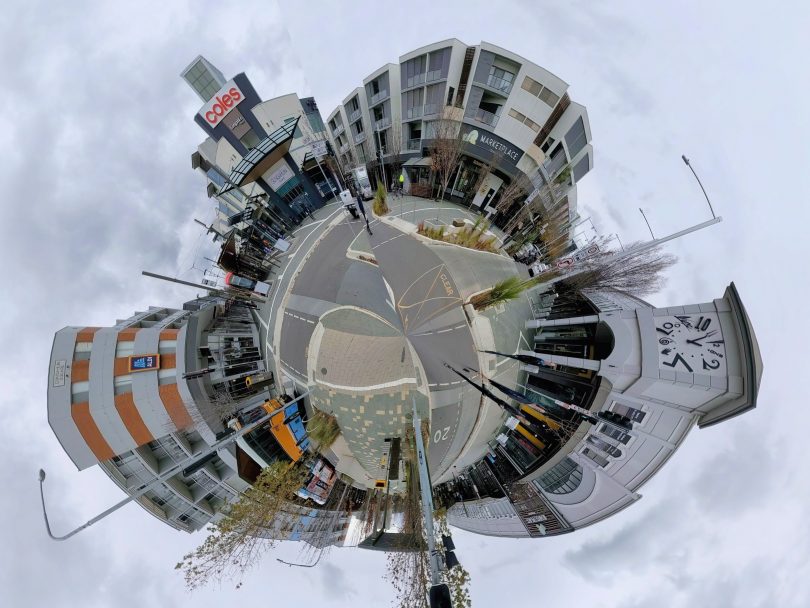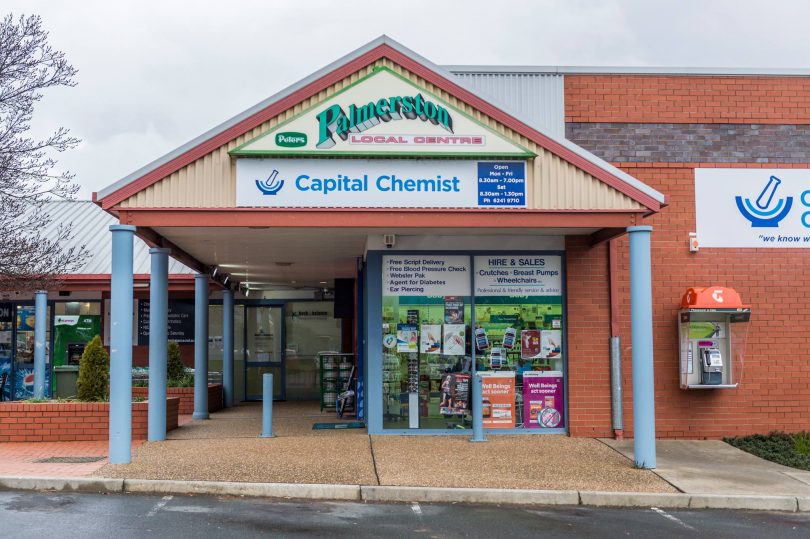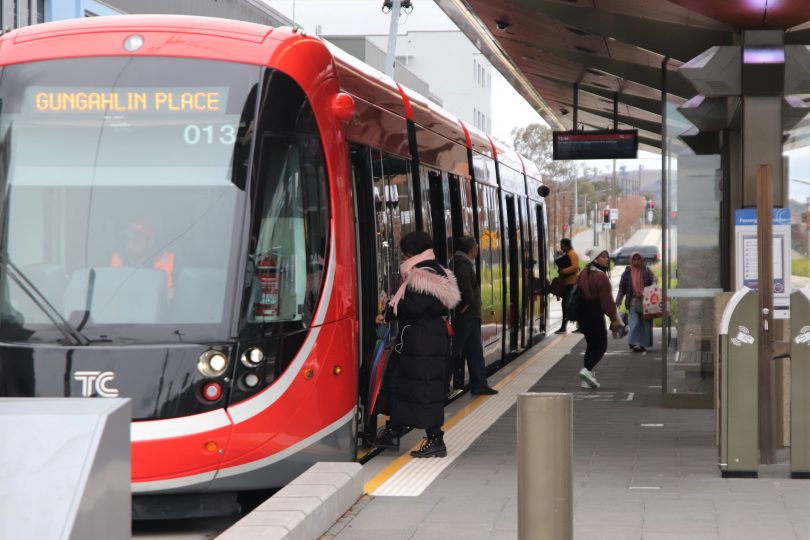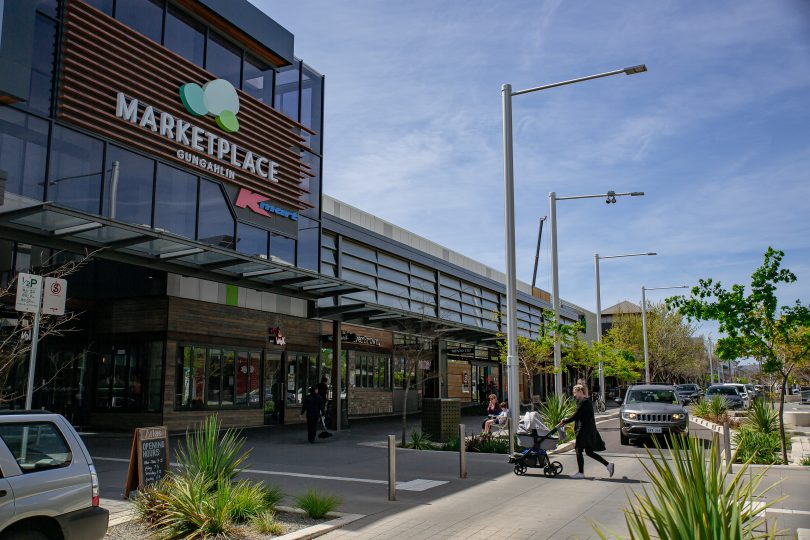
Gungahlin may still be growing but it’s already one of Canberra’s largest areas. Photo: Damien Larkins.
While still seen as a new part of Canberra, Gungahlin has grown up into a thriving suburban centre. However, it’s still struggling to get its dues.
Hayden Shaw, 26, has lived his whole life in Gungahlin.
“It’s a convenient place to live,” he says. “Living and working in Gungahlin. I haven’t seen any reason to move outside the area.”
The land where Gungahlin now stands been home to Indigenous Australians, settlers and squatters.
It was acquired to be part of the ACT between 1913 and 1915, and the town of Gungahlin was included in the 1957 future development plan.
The district was officially launched as Canberra’s fourth town centre by the ACT Chief Minister in 1991.
Now it’s one of Canberra’s most populated areas.

Hayden Shaw, 26, has lived in Gungahlin his whole life. Photo: Hayden Shaw.
Hayden’s parents lived in Amaroo when he was born, he went to Gungahlin College and now works at the National Archives of Australia preservation facility in Mitchell.
It’s the lifestyle that’s got him hooked on Gungahlin: convenience without the chaos.
“It’s relaxed, and it’s not like living in the middle of Sydney or Melbourne,” he says.
“You get the benefits of living in a city without having to drive an hour to get to work. We’ve got everything here.”
When Hayden was a child, the town centre had only just opened, but now it’s a bustling centre.
“Everything has really started to speed up in the past few years,” he says. “It looks a bit different than it did a few years ago.”
And there’s still more to come, with new bars popping up and a cinema on the way.
“Having recently bought a place, I can’t really go anywhere,” says Hayden.
“But I’m quite happy in Gungahlin. I think I’m going to stick around for a bit.”

Tam Le has run Capital Chemist in Palmerston for more than 20 years. Photo: Damien Larkins.
Pharmacist Tam Le has owned and run Capital Chemist in Palmerston for more than 20 years.
“I feel great to be part of it and live in Gungahlin,” he says. “Living standards are good, it’s a good environment and has better infrastructure.
“Better life, family growing, education – everything’s good.”
In 1994, at age 23, Tam moved into Palmerston when he first arrived in Australia from Vietnam and went to Copland College as a mature-age student.
Although he moved to study pharmacy at Melbourne’s Monash University, once qualified in 2000 he moved right back.
“It’s changed quite a lot,” he says. “Back then it was so quiet.”
“The [Gungahlin] Marketplace was very small, only Woolworths, the pharmacy and some shops there. And all the empty fields there.”

Palmerston Capital Chemist has served the local community since the suburb’s early days. Photo: Palmerston Capital Chemist.
Tam says the biggest change is the population growth and the extra traffic it has brought.
“More shops are opening in Gungahlin,” he says. “More new suburbs have developed and more people have come here. I love the people here – friendly, nice.”
However, Tam says more development is needed in the town centre to accommodate the still-growing area.
He and his family have looked at buying a new house in Denman Prospect, but his three children don’t want to change schools.
The family has bought a new home in Moncrieff and has no plans to leave the area.
“No,” Tam says with a laugh. “I’m going to be here for [a lot] longer. I’ll stick with Gungahlin.”
While areas of Gungahlin are still being developed, at its core it is a firmly established part of Canberra.
Gungahlin Community Council president Peter Elford says the area is not just growing, it’s already big.
There’s a diverse population in Gungahlin with a broad range of ages, cultural backgrounds and faiths.
“It’s not a small and emerging place,” says Peter. “There’s 80,000 residents in Gungahlin now … [it’s] the third biggest district in Canberra.”
He has been there for 25 years, and his children went to local schools and now two have moved out of home and live just streets away.

Canberra’s light rail has helped reduce traffic, but the Gungahlin Community Council says more needs to be done. Photo: Damien Larkins.
Peter fears Gungahlin doesn’t have the infrastructure that is required to support the area’s growing multigenerational community.
“Parents and their kids, who have now got kids and are starting to look at schools and childcare centres, that’s already happening,” he says.
“At the other end of that scale, the people who moved into Gungahlin 25-odd years ago are now thinking, “Where do I retire to? What are my retirement living and aged care options?'”
As the last of Gungahlin’s suburban areas are developed and sold, questions remain on how they will be serviced.
It’s not just about roads, schools and healthcare, but maintaining and improving quality of life with green spaces, sports and recreation, community spaces and the arts.

Gungahlin Town Centre has come a long way, but locals say more is needed. Photo: Region Media.
So what is the future for Gungahlin?
Peter wants to have a big-picture conversation with community, industry and government to find a well planned answer to suit everyone’s needs.
“The next four or five years are really big for Gungahlin,” he says. “We’ve got to work out, given what’s left in terms of space – which turns out not to be as much as you’d think – where are we going to fit everything in?”
The ACT Government is seeking public input into a review looking at reforming the ACT’s planning system.
You can have your say on what you value about Gungahlin here.













